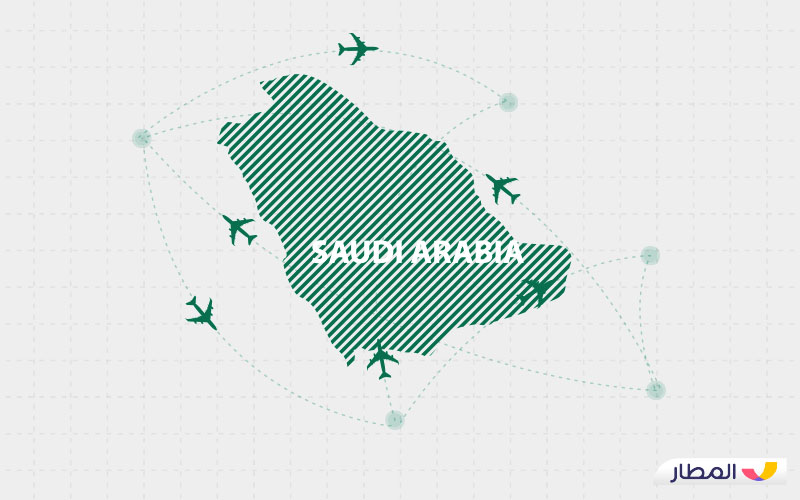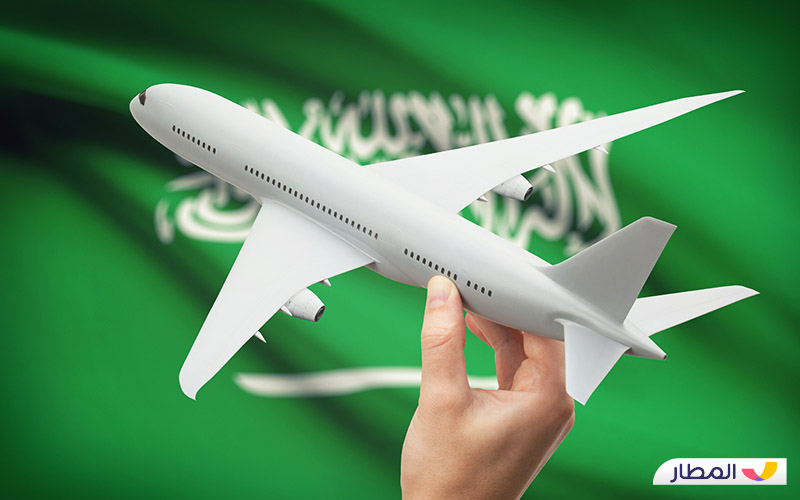Saudi Airlines, the national carrier of the Kingdom of Saudi Arabia, has always been at the forefront, playing a significant role in the Saudi Arabian economy by leading training programs, providing job opportunities for thousands of people, and investing billions in facilities. Additionally, it manages the flow of arrivals and departures to and from Saudi Arabia. Here is a detailed report on Saudi Arabian Airlines and important facts you may not have known before.
Saudi Arabian Airlines
It has been the official airline of the Kingdom of Saudi Arabia since 1945, making it one of the largest airlines worldwide. It is a member of the Arab Air Carriers Organization and has code-sharing agreements with ten international airlines.
- Saudi Airlines operates a modern and advanced fleet of 94 Airbus aircraft and 53 Boeing aircraft.
- It carries more than 34 million passengers worldwide, operating an average of 500 flights per day, according to 2018 figures.
- The company’s main hub is King Abdulaziz International Airport in Jeddah, with three additional affiliated airports.
Throughout this article, we will explore the most important services and advantages offered by Saudi Airlines, as well as the most frequently asked questions.
Features of Saudi Arabian Airlines
Saudi Arabian Airlines is unique in offering several advantages that ensure customer satisfaction with its service quality during flights around the world. The most notable benefits include:
- Saudi Arabian Airlines has a fleet of modern aircraft, capable of accommodating large numbers of visitors to the Kingdom.
- Flights are operated by well-trained crews specializing in ongoing maintenance to ensure passenger comfort and safety.
- High-quality service and a professional hospitality crew, as it is an important member of the international organization Chaine des Rotisseurs.
- Saudi Airlines holds the quality mark for preparing Western cuisine dishes.
- Modern comforts and a wide network of partnerships with 19 different airlines.
- Moreover, all its seats are comfortable, equipped with sleeping and relaxation amenities, and feature well-designed partitions that provide passengers with freedom of movement, comfort, and privacy.

Travel Destinations on Saudi Airlines
Saudi Arabian Airlines operates more than 95 flights worldwide, covering all four continents and the entire Middle East. The most important destinations include:
- A flight via Saudi Airlines from/to Jeddah
- Another from/to Riyadh
- A flight from/to Cairo
- Also, from/to Dubai
- And from/to Amman, Jordan
These flights are just examples of the available routes. Customers can also book tickets more easily through the official website of Saudi Airlines, which allows them to modify or change booking details, select seats, purchase additional baggage, reserve a hotel room with one of the airline’s partner hotels worldwide, complete travel procedures, and more details that will be covered in the next sections. Follow us on almatar to stay updated with the latest information.
Booking Tickets with Saudi Airlines
Saudi Airlines also accepts bookings via phone through the customer service department.
Alternatively, you can contact one of Saudi Airlines’ affiliated travel and tourism offices or local agents in your country.
Additionally, using the mobile application, almatar members can make bookings on Saudi Airlines using their personal accounts and accumulated mileage credit, known as “mile distance.” However, baggage allowances differ significantly on Saudi Airlines, depending on the travel class, destination, and type of trip, whether domestic or international. These differences include the size and number of free checked baggage pieces allowed in the aircraft’s cargo hold, hand luggage permitted in the passenger cabin, and excess baggage fees. You can learn more in the following section to get complete insights into domestic and international flights.
-
Domestic Flights on Saudi Airlines
First-class and business-class passengers are allowed to bring one piece of free checked baggage weighing 32 kg, with total dimensions of 158 cm.
Additionally, an extra bag is allowed for Silver and Gold Alfursan cardholders.
A 9 kg hand luggage is permitted for all passengers in both standard and premium classes, along with a bed or foldable seat.
Infants are allowed one piece of free baggage weighing 23 kg, which cannot be increased.
Economy class passengers are allowed one piece of free checked baggage weighing 23 kg, with a length of 158 cm, in addition to one extra piece of the same weight and dimensions for Alfursan members, along with a hand luggage item.
-
International Flights
For international travelers in first class and business class, they are allowed two pieces of free checked baggage, each weighing 32 kg with total dimensions of 158 cm.
Additionally, Alfursan cardholders and SkyTeam Elite members are permitted one extra piece of the same weight and dimensions.
Passengers are also allowed to carry one piece of cabin baggage weighing 9 kg.
- Economy class travelers are permitted to carry two pieces of free checked baggage, each weighing 23 kg and measuring 158 cm.
- Alfursan and Elite members are also allowed one additional piece of the same weight and dimensions, along with one hand luggage item weighing 7 kg.
- Infants are entitled to only one free baggage piece weighing 23 kg.
In this article, we have covered key facts you may not have known about the history of Saudi Airlines, also known as Saudia. It is the national airline of the Kingdom of Saudi Arabia.
Its most important operational base is King Abdulaziz International Airport in Jeddah, while its secondary hubs are King Fahd International Airport in Dammam and King Khalid International Airport in Riyadh.
Additionally, this airline is one of the largest in the Middle East in terms of revenue. It operates both domestic and international routes, serving more than 85 countries across Asia, the Middle East, Africa, North America, and Europe.

